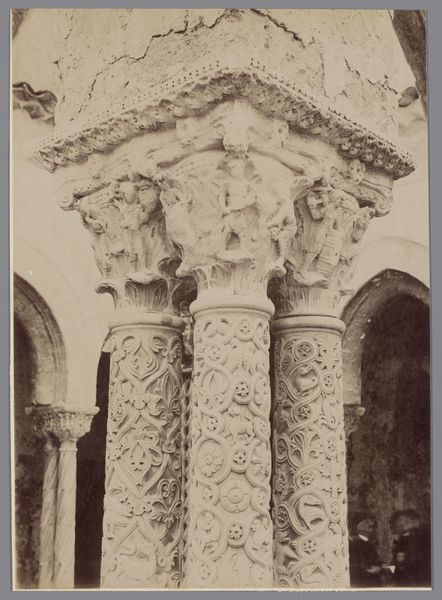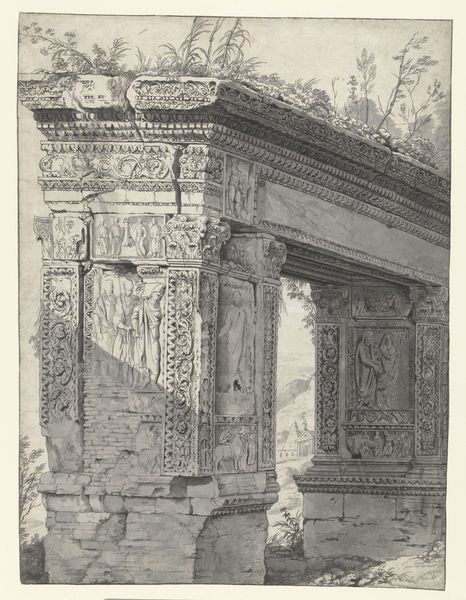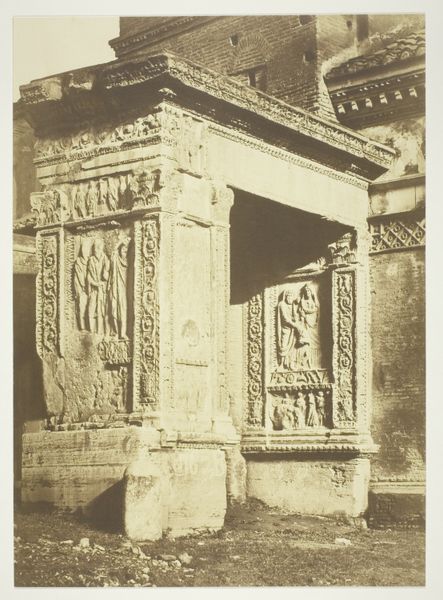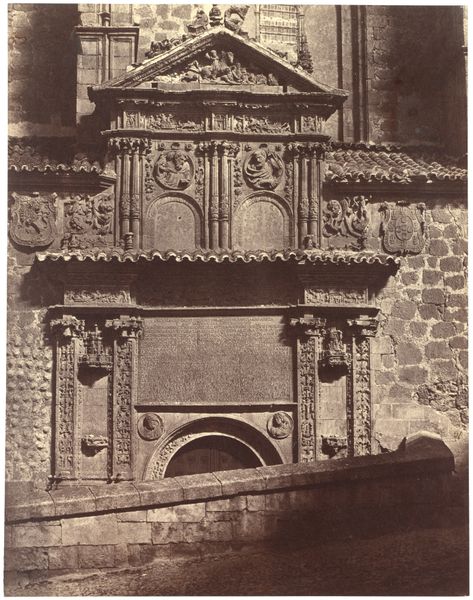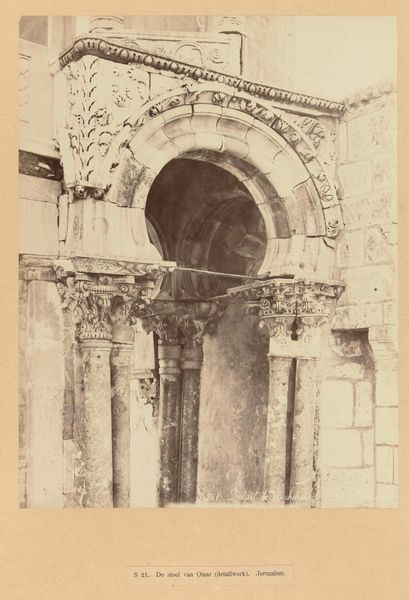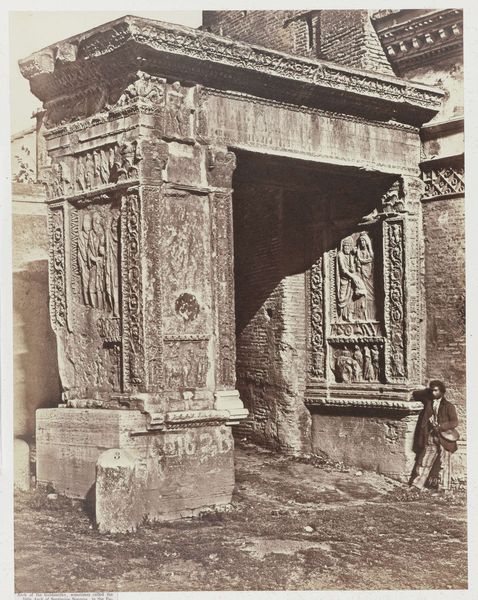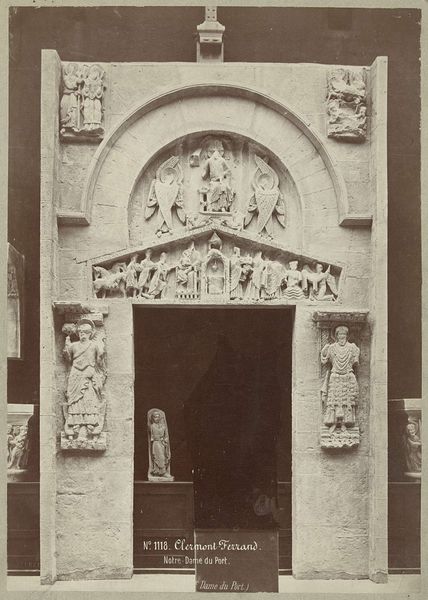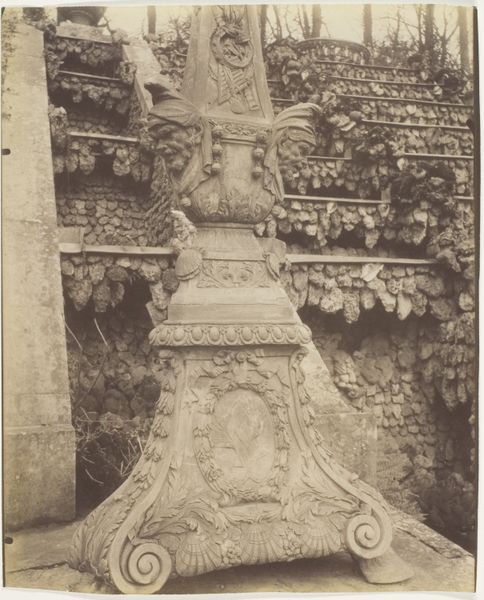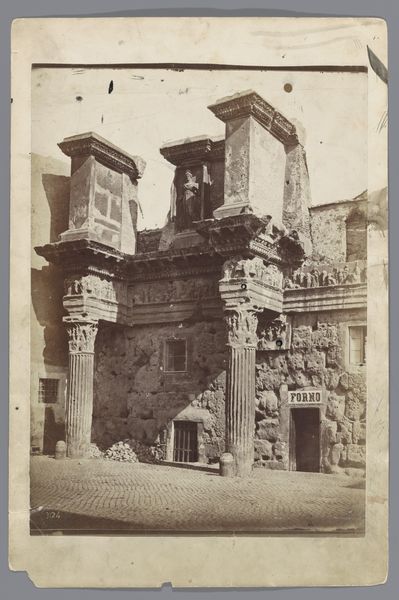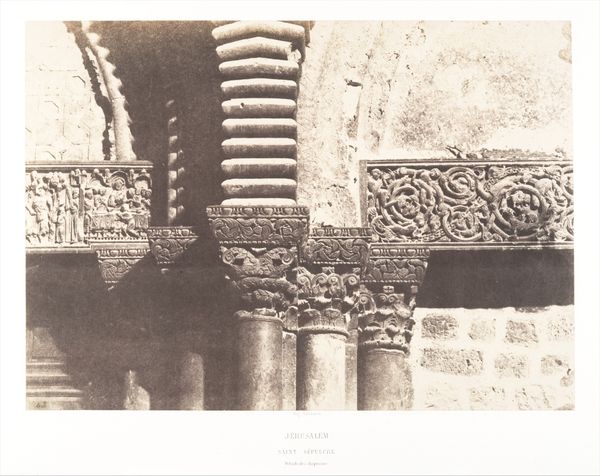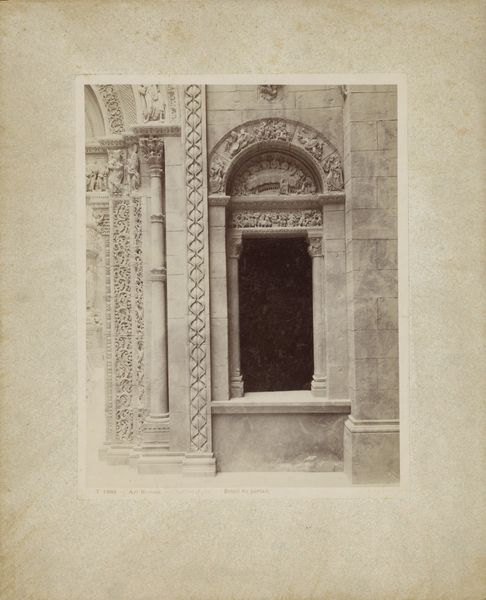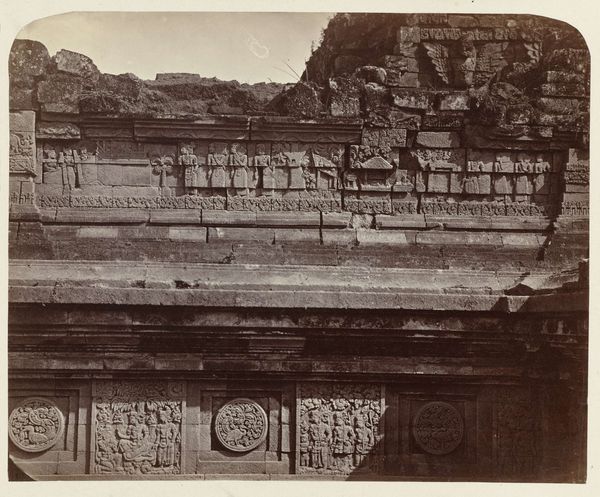
Gedecoreerd portaal van de tempel van Bacchus, Baalbek c. 1867 - 1877
0:00
0:00
felixbonfils
Rijksmuseum
photography
#
aged paper
#
toned paper
#
landscape
#
tea stained
#
photography
#
ancient-mediterranean
#
19th century
#
historical font
Dimensions: height 279 mm, width 216 mm, height 558 mm, width 468 mm
Copyright: Rijks Museum: Open Domain
Editor: So, this is Félix Bonfils’ photograph, "Decorated Portal of the Temple of Bacchus, Baalbek," taken sometime between 1867 and 1877. It's a stunning image of a ruined temple, incredibly detailed despite its age. The monochromatic tones lend it an ethereal, almost dreamlike quality, but the scene it represents feels grand and awe-inspiring. What catches your eye? How do you interpret this work from a formalist perspective? Curator: The power of this image resides precisely in the tension between ruin and enduring form. Observe the meticulous rendering of the temple's ornamentation. Note the intricate carvings, the repeated motifs – each a testament to the original craftsmen's skill. The photograph itself, as a medium, perfectly captures the play of light and shadow across the stone surfaces, enhancing the sense of three-dimensionality and mass. Consider the use of space. The portal dominates, yet the surrounding damaged architecture speaks of the relentless march of time. Editor: It’s interesting how the damage almost adds to the texture, creating another layer of visual information on top of the original design. Do you think the damage invites us to re-examine the structure from a new, modern point of view? Curator: Precisely. The decomposition provides another aspect that enhances the formal complexity and richness, like visual palimpsests; revealing not only an ancient grandeur but the very materiality of existence. Consider, also, the interplay of horizontal and vertical lines. The sharp geometric forms give order while the crumbling components interrupt and fracture it, forming new compositions within the larger picture. Editor: I see what you mean. I hadn't considered how the ruin itself functions as a compositional element. I was thinking only about the historical context but now I see the photograph's texture also represents and evokes history and that has changed my mind completely. Thank you. Curator: Indeed. The photograph then, becomes a formal study, not simply of a temple, but of time, form, and texture in dialogue.
Comments
No comments
Be the first to comment and join the conversation on the ultimate creative platform.
